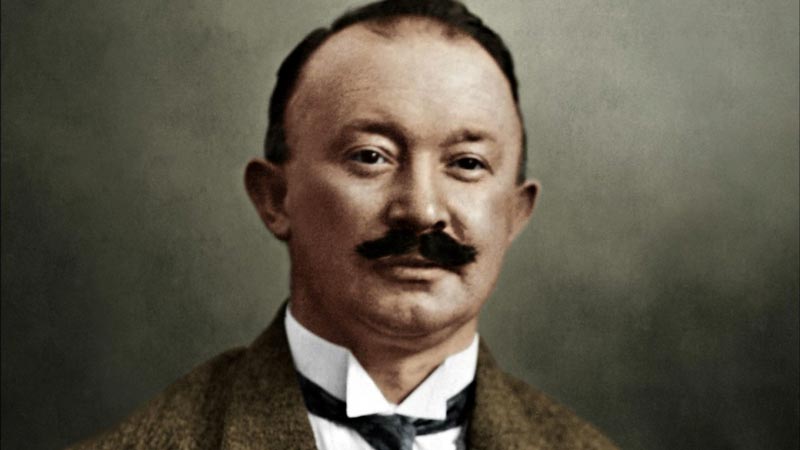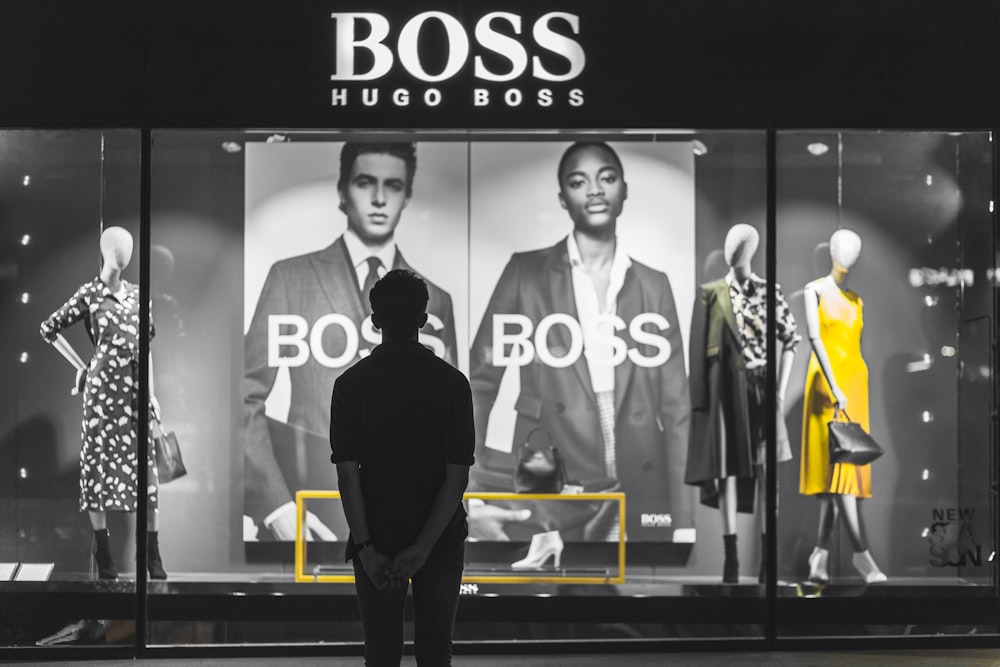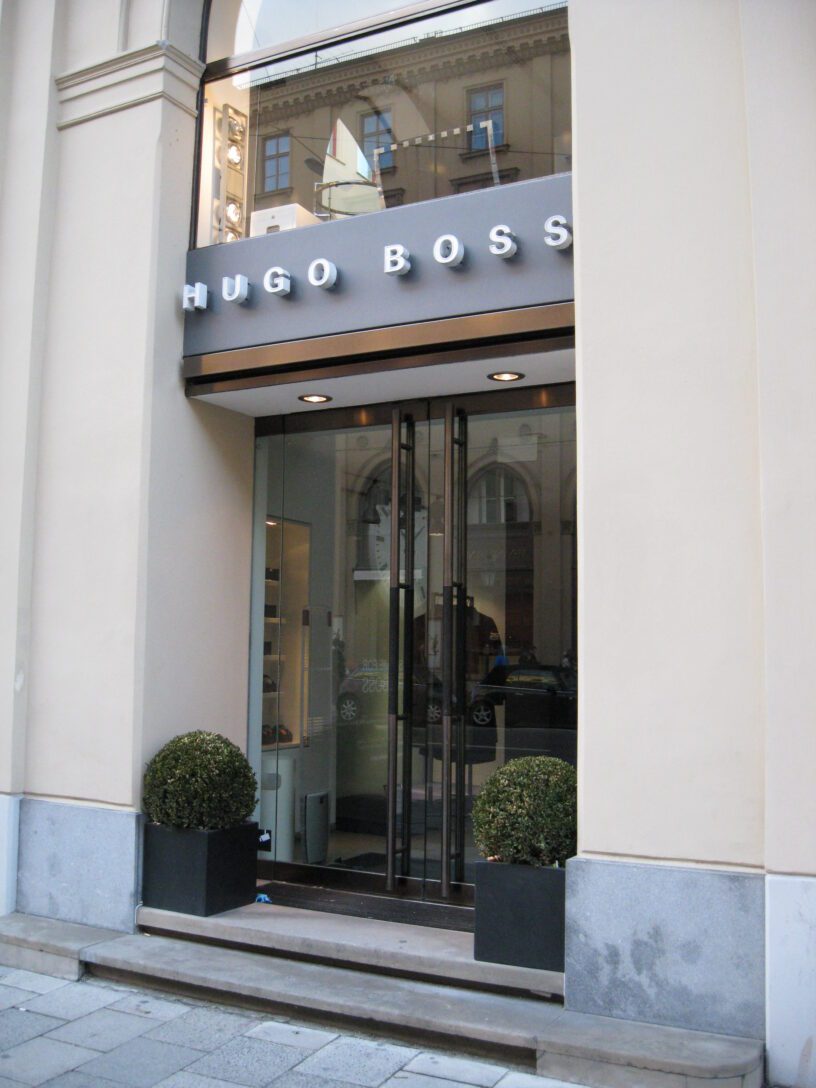
Hugo Boss slipper. Photo by Donald Trung Quoc Don (Chữ Hán: 徵國單). Wikimedia Commons
Top 10 Intriguing Facts about Hugo Boss
Hugo Boss was a German fashion designer and businessman who founded the German clothing company ‘Hugo Boss AG.’ He was also a member of the ‘Nazi Party,’ and remained devoted to it until the end of the Second World War. He was the youngest of five children, born and raised in Metzingen, Germany.
When he was a teenager, he apprenticed as a merchant. He completed his two years of military service in the early 1900s and then began working at a weaving mill. He eventually took over his family’s lingerie business.
When World War I broke out, he was drafted into the German army. Hugo, a fervent nationalist, joined the ‘Nazi Party’ in 1931, only two years before Hitler took power. Prior to that, in 1923, he founded his own fashion company, ‘Hugo Boss AG.’
He was the primary supplier and designer of the ‘Nazi Party’ members’ wartime uniforms. Following the war, he was stripped of his voting rights and ability to run the business due to his association with the ‘Nazis,’ so his son-in-law took over as the company’s owner. Hugo passed away in 1948, at the age of 63.
1. Hugo Boss was born in Germany

Hugo Boss. Photo from Wikimedia Commons
Boss was the youngest of five children born to Luise (née Münzenmayer) and Heinrich Boss in Metzingen, Kingdom of Württemberg. He trained as a merchant, served in the army from 1903 to 1905, and then worked in a weaving mill in Konstanz. In 1908, he inherited his parents’ lingerie shop in Metzingen. He was drafted into the army in 1914 and served until the end of World War I as a corporal.
2. Hugo Boss began by producing functional suits for factory workers

Man standing in front of Boss Hugo Boss store. Photo by Jules D. Unsplash
Hugo Boss, a German tailor, established his workshop in Metzingen, a small village south of Stuttgart, in 1924, which is still the Group’s headquarters today. He began making protective suits for industrial workers as well as men’s work clothes. In the 1930s, he successfully converted his workshop into a small factory. Later came the “dark era” of Hugo Boss, which included its involvement in Nazi regime business (selling uniforms) and the use of slave laborers in its factories during World War II.
3. He utilized slaves from the Balkan states
Historians note that Boss used the work of approximately 40 prisoners and approximately 150 slaves from the Baltic states, Belgium, France, Austria, Poland, and the USSR to meet the demands for uniforms in the final years of the war. According to the same sources, the company’s directors were enamored with Nazism, and Hugo Boss had a photograph of himself with Hitler in his apartment in 1945.
4. Hugo Boss apologized for its mistreating laborers
Hugo Boss, the German fashion house, apologized for its treatment of forced laborers during World War II, when it supplied uniforms to the Nazis. The apology was issued to coincide with the publication of a new history of the company during the Hitler years, which it had commissioned. Its factory employed 140 forced Polish and 40 French workers.
5. Hugo Boss began his career as a merchant’s apprentice

Hugo Boss München. Photo by Cholo Aleman. Wikimedia Commons
He was interested in starting his own business. Boss began his career as a merchant before joining the army during World War One. Hugo Boss founded his clothing company in Metzingen, a small town south of Stuttgart, Germany, in 1923. In 1924, Boss established a clothing factory with the help of two other manufacturers.
Originally employing around 30 people, the company made handmade garments. Rudolf Born, a textile distributor who supplied clothing to the National Socialist Party, was the company’s first major commission. Boss advertised his company as a “supplier of Party equipment since 1924” during the 1930s.
6. Boss had to declare bankrupcy in 1931
Due to Germany’s economic difficulties, Boss was forced to declare bankruptcy in 1931. He did, however, reach an agreement with his creditors, which left him with six sewing machines to restart his business. The following year, Boss joined the Nazi Party and began producing uniforms for the SS and the Hitler Youth, among others.
He stated that he hoped the party would end the devastating unemployment that was ravaging Germany at the time, and that he had become estranged from the Lutheran church. He became a sponsoring member of the SS as well as a member of the Nazi party.
7. He became a member of the Nazi Party

Boss cologne. Photo by Klim Musalimov. Unsplash
In his book Hugo Boss, 1924-1945, Roman Koester, an economic historian at the Bundeswehr University in Munich, wrote, “It is clear that Hugo F. Boss joined the party not only because it led to contracts for uniform production, but also because he was a follower of National Socialism.”
By the third quarter of 1932, SS-Oberführer Prof. Karl Diebitsch and graphic designer Walter Heck, who had no affiliation with the company, had designed the all-black SS uniform (to replace the SA brown shirts).
The Hugo Boss company produced these black uniforms, as well as the brown SA shirts and the Hitler Youth black-and-brown uniforms. Some of the workers were French and Polish POWs forced to work. In 1999, US lawyers acting on behalf of Holocaust survivors filed a lawsuit against Hugo Boss for using slave labor during the war.
8. Hugo Boss was elected to the ‘German Labour Front’
Hugo gradually rose through the Nazi party’s ranks, eventually becoming a member of the German Labour Front, a national labor organization that managed to supplant all of the existing trade unions at the time.
But Hugo Boss’ association with the Nazi-party paid off when he ran an ad in 1934 claiming that his clothing company had been the sole supplier of Nazi uniforms for the previous ten years. However, this was not entirely accurate, as he had only begun producing these in 1928 at the most.
9. Hugo was convicted of being an activist
However, as history has shown, this association would eventually end in another major disappointment when the Nazis finally lost the war in 1945. Hugo was convicted of being an activist and beneficiary of National Socialism in a post-war trial in 1946, and he was stripped of his voting rights and barred from running a business in Germany.
He was also hit with a £54 000 fine. However, Boss appealed the verdict, claiming in court that he was only a follower of National Socialism rather than an activist, and that saving his company and doing something about Germany’s rampant economic decline at the time were the driving factors in his decision to align with the Nazis.
10. Hugo boss died from an untreatable infection

Hugo Boss. Photo from Wikimedia Commons
Hugo Boss would die shortly after the war, on the 9th of August 1948, at the age of 63, from an untreatable infection that caused a tooth abscess.
Planning a trip to Paris ? Get ready !
These are Amazon’s best-selling travel products that you may need for coming to Paris.
Bookstore
- The best travel book : Rick Steves – Paris 2023 – Learn more here
- Fodor’s Paris 2024 – Learn more here
Travel Gear
- Venture Pal Lightweight Backpack – Learn more here
- Samsonite Winfield 2 28″ Luggage – Learn more here
- Swig Savvy’s Stainless Steel Insulated Water Bottle – Learn more here
Check Amazon’s best-seller list for the most popular travel accessories. We sometimes read this list just to find out what new travel products people are buying.









